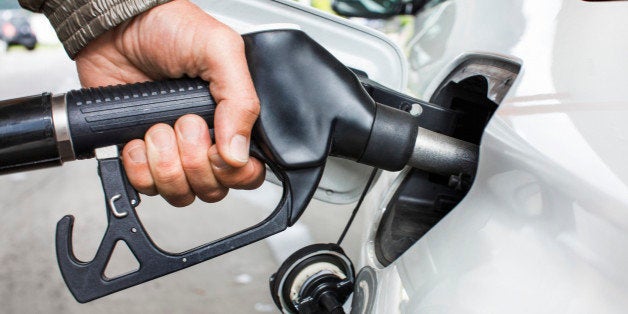
Over 32 million Americans will be using the nation's roads and rails to reach their summer travel destinations this Memorial Day. But as many states struggle to adequately fund that infrastructure, some lawmakers are beginning to wonder whether we need a complete overhaul of the way we pay for our transportation system. We don't. At least not yet.
States can't afford to maintain their infrastructure because gas tax rates are simply too low. Twenty-four states have gone a decade or more without a gas tax increase, and 16 states and the federal government have gone two decades or more. As a result, Americans today are spending less of their household budgets on gas taxes than they have in decades. While that might sound like good news to some drivers, the consequence has been more traffic congestion and the delay of vital maintenance projects.
The reason the gas tax no longer raising the revenue we need is twofold.
First, while gas tax rates have stood still, construction costs have increased. The federal government, for example, has been charging drivers 18.4 cents per gallon for more than 20 years. But 18.4 cents buys less asphalt and machinery than it did 20 years ago because of inflation or gradual increases in the price of those materials.
Second, more fuel-efficient vehicles have allowed drivers to buy less gas and pay less in gas taxes. This technological advancement is no doubt a positive development overall, but it has shrunk transportation budgets that make driving and transit possible.
It may not be obvious at first, but these two developments require very different responses from our elected officials. If fuel-efficiency improves as expected and many of us are eventually driving vehicles that use little or no gasoline, then clearly a replacement for the gas tax will be needed. This is the motivation behind the growing push for a per-mile tax on drivers, often called a vehicle miles traveled (VMT) tax.
The idea behind VMT taxes is similar to the one that led to the creation of the gas tax. People who drive a lot should pay more for the roads than less frequent drivers who cause less wear-and-tear. But while pilot studies in Oregon have shown that a VMT tax is technically feasible, lawmakers at the federal level and in the vast majority of states are not yet ready to enact such a tax. Before that happens, significantly more public discussion will be needed around issues like maintaining driver privacy, the cost of implementation, and whether the tax rate should vary for vehicles of different weights or drivers with low incomes.
These conversations around fuel-efficiency are important, but they should not become a distraction from the impacts of construction cost inflation that many lawmakers have chosen to ignore. Over the last twenty years, the cost of infrastructure construction has increased by 68 percent, for an average of 2.6 percent per year. But most gas tax rates don't grow by 2.6 percent per year. In fact, their shortsighted design usually doesn't allow them to grow at all unless lawmakers specifically vote to raise the tax. That tends to happen less than once a decade, on average, thanks to the problems that come with being labeled a "tax-raiser" on the campaign trail.
The fact that asphalt tends to become more expensive over time doesn't mean that we need to throw out the gas tax entirely. It only means that we shouldn't expect decades-old gas tax rates to keep pace with the cost of building and maintaining the nation's infrastructure.
Fortunately, there is a growing recognition that flat gas tax rates don't make sense in a world where we know that construction costs will grow over time. Eighteen states, home to a majority of the country's population, have written their gas tax laws so that the tax rate can gradually rise alongside inflation or gas prices. This reform is straightforward, thoroughly tested, and for the time being, far more important than the debate over VMT taxes.
Over the same 20-year period that construction costs increased by 68 percent, on-road fuel-efficiency improved by just 11 percent. Put another way, for every $1 that fuel-efficiency gains have drained from the purchasing power of the nation's transportation funds, inflation has taken a much larger $4.08.
It is reassuring that some lawmakers are looking toward the future and debating how to fund infrastructure in a world where electric cars may become the norm. But that does not mean we should ignore the deficiencies in our infrastructure that millions of drivers will be dealing with this Memorial Day, and every other day of the year. For at least the time being, gas tax reform remains the most viable way to keep America moving.